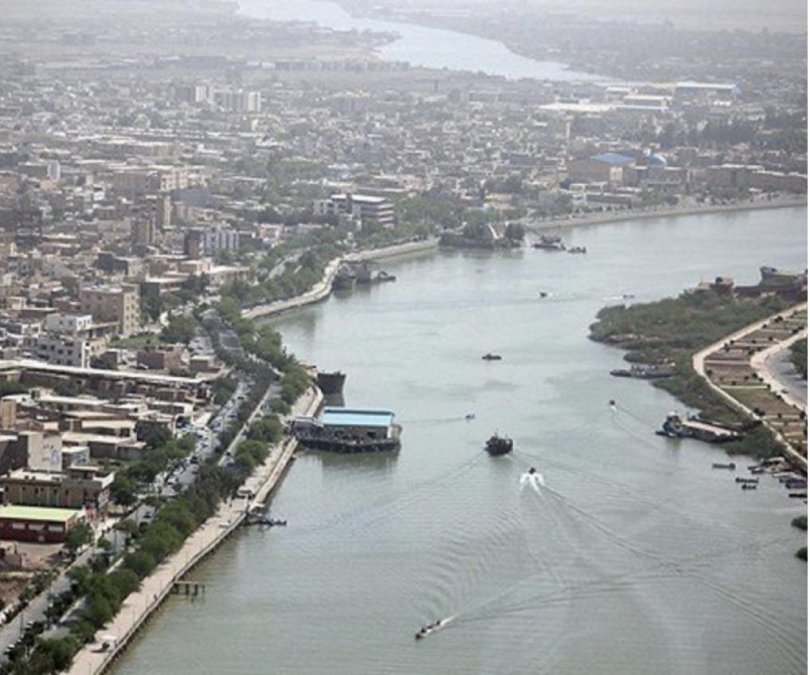What is the reason for Baghdad’s obstruction of dredging operations?
Iraq’s Foot on the Neck of the Arvand River
What is the reason for Baghdad’s obstruction of dredging operations? According to Iran Gate, the dredging of the Arvand River has become one of the most challenging issues that, after the fall of Saddam Hussein, has turned into a point of contention between Tehran and Baghdad. The Iranian side has tried over the years to persuade the Iraqi side to resume dredging operations, but so far no willingness has been seen from the Iraqi government.
The Arvand River, which is one of the vital arteries of Khuzestan province, suffered significant damage during the eight-year imposed war with Iraq. It should be noted that according to international law, this border river must be regularly dredged by the governments of Iran and Iraq. However, after the fall of Saddam Hussein and the rise of various governments in Iraq, dredging operations have been halted.
In this context, the director general of Khorramshahr Port and Maritime Affairs recently announced that Iraq has not shown readiness to cooperate for the commencement of dredging operations. Although Iran continues its efforts in this area, the sheer number of war wrecks in the riverbed has been such that in 2022 alone, the Iranian side managed to remove at least six large wrecks from this river through dredging operations.
However, experts believe that if the Iraqi side does not cooperate in dredging the Arvand, the sunken war equipment along with the naturally occurring mud and silt in the Arvand will effectively halt water transport through this major river.
Whose Responsibility is Dredging?
According to international laws, the thalweg of border rivers is recognized as the boundary between two countries. Regarding the Arvand River, which determines the border between Iran and Iraq, the thalweg law applies.
Considering this issue and the navigational capability of the Arvand River, the governments of Iran and Iraq are obliged to conduct coordinated dredging operations at specific intervals. This is of particular importance for the continuation of transport flow in such rivers. However, as mentioned, Baghdad has avoided dredging operations for various reasons.
It should be noted that Iran alone cannot fully dredge this river because implementing this plan would force Iran to violate Iraq’s territorial sovereignty, which in international law terminology is considered an invasion of a neighbor’s territory. Consequently, it can be said that the obstruction by the Iraqi government over the years has exposed this vital artery of Khuzestan to serious environmental risks, risks that could threaten the continuation of the Arvand River’s existence and endanger the livelihood of hundreds of thousands of Iranian citizens.
What is the reason for Iraq’s lack of motivation?
Many believe that the Iraqi government, driven by political motives, has refrained from continuing projects such as the dredging of the Arvand and the mulching in the Iraqi part of the Hoor al-Azim wetland. In fact, the government has tried to use environmental issues as a bargaining chip in bilateral relations. Although such actions, albeit limited, were carried out during Saddam’s rule in Iraq, these projects have been halted despite the rise of governments with clear proximity to the Islamic Republic, particularly Nouri al-Maliki.
Now that Mr. Sudani’s government has taken charge in Baghdad, it seems this tool has gained importance for the new Iraqi government, which coincidentally does not have warm relations with Tehran. Given the circumstances mentioned, it seems unlikely that the Sudani government has the desire or motivation to initiate the dredging project from the Arvand.
Although the Deputy of Maritime Affairs of the Iranian Ports and Maritime Organization recently reported on pursuing negotiations between the Iranian and Iraqi governments to start dredging, the same official stated that diplomatic efforts have not yet yielded results, and no progress has been made in this area.
One Khorramshahr and One Arvand
The port of Khorramshahr is one of the most important points whose life and death are entirely dependent on the vitality of the Arvand River. This is why the Iranian government needs the cooperation of the Iraqi government to pursue dredging operations from both sides.
As mentioned, many war devices are sunken and buried in the Arvand River, making dredging significantly more difficult. It is estimated that the number of large and medium wrecks in the Arvand River exceeds 300, which not only creates problems for water passage but also poses a risk of explosion and the death of innocent citizens in some cases.
Khorramshahr also desperately needs the waterway in this vast river to remain open to continue its existence. The river’s transit function is of great importance to the residents of Khorramshahr port, and its environmental aspect is also significant. It should be noted that even if the war wrecks from the Iran-Iraq war were not present in the Arvand’s bed, the accumulation of mud and silt at the river’s bottom would still pose many natural and health hazards to the Arvand’s coastal residents.

